Treatment for ITP
Anticoagulation and Antineoplastic approach has been followed in ITP.
As per the classical text of Ayurveda, Akika, Akik Pishti processed with Gulab or ketaki or Chandana is the one of the first choice of treatment protocol. Due to its classical indication in Pitta roga, Rakta pradara, bleeding gums, Rakta pitta, Raktasrava and Rakta shtivana.
Raktastambhana (To stop bleeding) and sankochna(Narrowing) properties of Shudha Sphatika is indicated and recommended for sitz bath in few patients.
Anticoagulation and Antineoplastic activity reduces the Sangrahi (astringent) factor, increases Balya (strength), Agnidipana (increases digestive fire), and Tridoshshamaka.
Classical Churna like Ashwagandha, Amalaki, Shatavari, Yashtimadhu, Shweta musali, Bala, Gokshura, Sharkara has the property of Rasayana and Balya so it strengthens the immunity and helps in reducing the immunologic destruction of platelets.
Herbs having Raktapitashamaka and Rasayana improves health by increasing immunity, vitality, and resistance.
Herbal grass (Durwa) has the property of hemostasis, refrigeration, and healing so externally it is used in wounds, hemorrhages, burning sensation (like urticaria, erysipelas) and depigmentation of skin
A combination of herbs having an erythropoietic activity are also advocated in menorrhagia. These contain Oligospirostanoside referred to as Immunoside which has an action of anti-inflammatory actions.
According to Ayurvedic classics, Raktapitta is classified into the following types
- Urdhvaga:- Causative features are Snigdha and ushna guna which vitiate the combination of Kapha and pitta and oozing of contaminated blood occurs from upward passages or orifices i.e. from mukha (mouth), Karna (ears), Akshi (eyes) and Nasa (Nostrils).
- Adhoga:- Characteristics are Raksha and ushna guna which causes vitiation of Vata and pitta and oozing of contaminated blood occurs from downward passages or orifices i.e. from Anal, Vagina and urinary system.
- Tiryaka:- When all the dosas are vitiated and are circulating in the bloodstream, the manifestation is subcutaneous.(Skin)
Answers to your most critical questions about ITP
ITP (immune thrombocytopenic purpura) is an autoimmune disease that is first noticed with the issue of
low platelet levels. In certain cases, the
causes behind the occurrence of ITP may
not be known. The treatment of ITP with allopathic medicine might lead to certain
side-effects or harm patients whose body is averse to such medication.
In such a situation, patients of ITP as well their caregivers have several pressing questions about the disorder.
How does ITP affect the body? What is the alternative to allopathic treatment?
Ayurveda has the answer to all of your critical questions about ITP
What is ITP (immune thrombocytopenic purpura)?
ITP (
immune thrombocytopenic purpura) is a condition where your own immune system
attacks your platelets. Platelets are
tiny blood cells that help the
blood clot and
stop bleeding. ITP affects people of all ages and is classified into two types: Acute-found mostly in children, and Chronic- found typically in adults.
How does ITP affect the body?
When the
platelets are destroyed, it becomes
difficult to stop the bleeding. Normally, our
platelet count ranges between
1,50,000 to 4,50,000 per microliter of blood. If the
platelet count drops below
10,000 per microliter, it could lead to
serious internal bleeding, and death in rare cases.
What are the most common symptoms of ITP?
Little red dots under the skin resulting from small bleeds
Bleeding in mouth, gums, and nose
Heavy menstrual periods
Blood in vomit urine or stool
Does ITP weaken the immune system?
In a way, yes. ITP involves the immune system itself
attacking the platelets. The system only attacks mature platelets. So, the
fresh platelets born in the
bone marrow are healthy. In most cases of
acute ITP, the platelet count rises significantly
within a few weeks and returns to
normal in a few months.
Can ITP be treat with Ayurvedic treatment?
Yes. Ayurveda follows
anticoagulation and antineoplastic approach to ITP. Based on ITP’s signs and symptoms, it
can be correlated with
Triyaka/Tiryaga Raktapitta described in Ayurveda. Anticoagulation and antineoplastic activity reduces the Sangrahi (astringent)
factor, increases Bala (strength), helps in Agnidipana (increase in digestive fire), and is Tridoshshamaka (calms down and balances the three Doshas).
What are some of the major Ayurvedic medicines used in ITP treatment?
Akika Pishti (Powder of the agate gemstone) As per the classical text of Ayurveda, Akika Pishti or powder of agate gemstone processed
with Gulab (rose water), Ketaki (umbrella tree flower), and Chandana (sandalwood) is the first choice of treatment. It has been classically indicated for use in treating Pitta roga, or acidity-related disorders, Rakta pradara, bleeding gums, Rakta pitta, Raktasrava and Rakta
shtivana.Shuddha Sphatika (Pure crystal/quartz stone) Shuddha Sphatita or pure crystal/quartz stone has Raktastambhana (Bleeding-prevention) and Sankochna(narrowing) properties and is recommended for sitz bath in few patients. Sharkara (Sugar) Sharkara or sugar has Rasayana and Bala properties. It
reduces the destruction of platelets and
strengthens immunity. Durva (herbal grass) Durva or herbal grass is effective in external healing. and
helps slow down blood flow from injuries. It is used to treat issues such as wounds, burning sensations such as urticaria,
erysipelas, and depigmentation of the skin. Alongside these major ingredients, many other herbs with Raktapitta shamak (acidity-
calming) properties are used to improve the immunity and vitality of the body. These include herbs that
aid in the production of red blood cells ( erythropoietin properties). Many of the herbs contain Oligospirostanoside which has anti-inflammatory characteristics and is considered to be an effective immunoside.
Where can I receive effective Ayurvedic treatment for ITP?
Ayurvedic treatment of ITP requires expertise and experience. Himalayan heal is
dedicated to research and development of Ayurvedic treatment of ITP for a decade. We are presently one of the
leading experts in the Ayurvedic
treatment of ITP in Himachal Pradesh. A network of Himalayan heal health and wellness centers spread across Himachal Pradesh is engaged in offering world-class healing and healthcare to patients of ITP and other ailments including cancer. The medicines used for treatment come from Himalayan heal own manufacturing
facility and meet stringent global norms and standards for quality and hygiene.
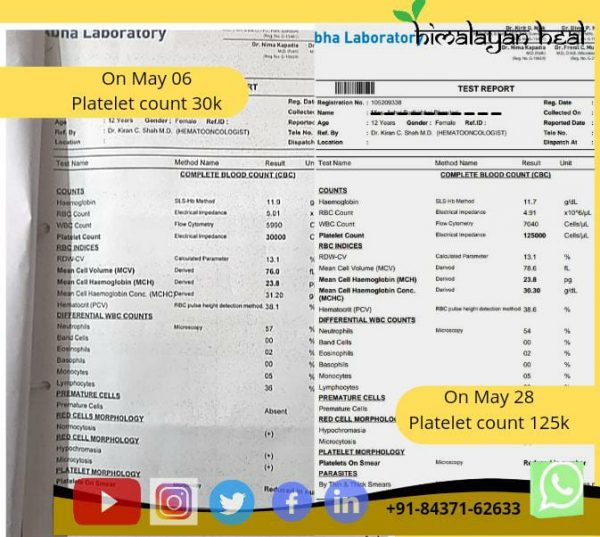
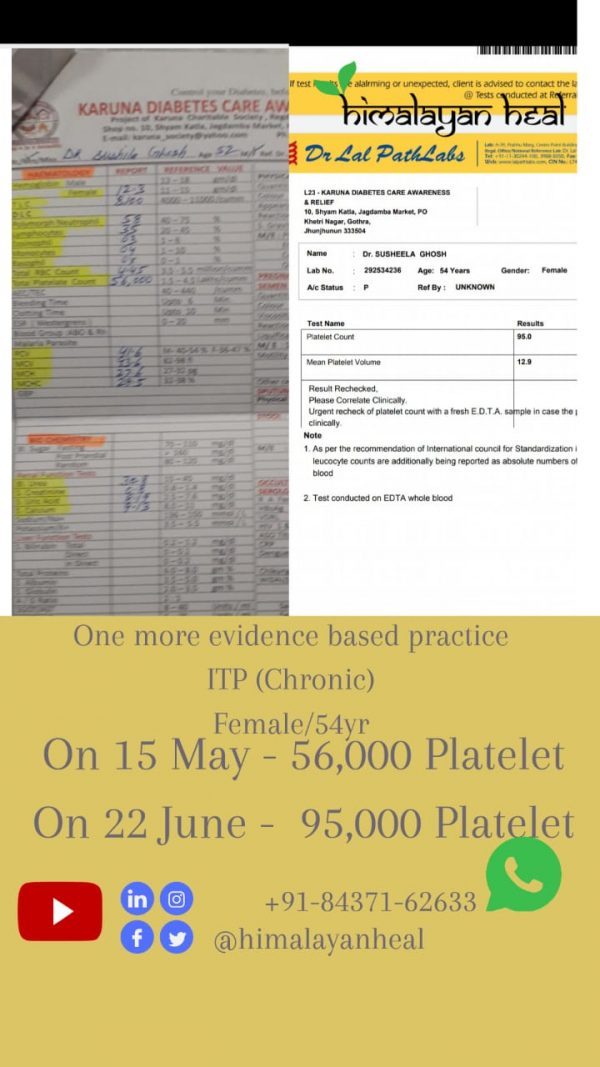








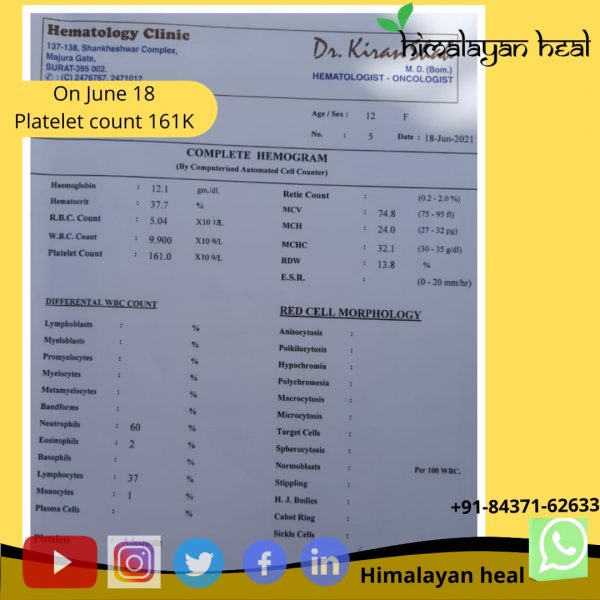


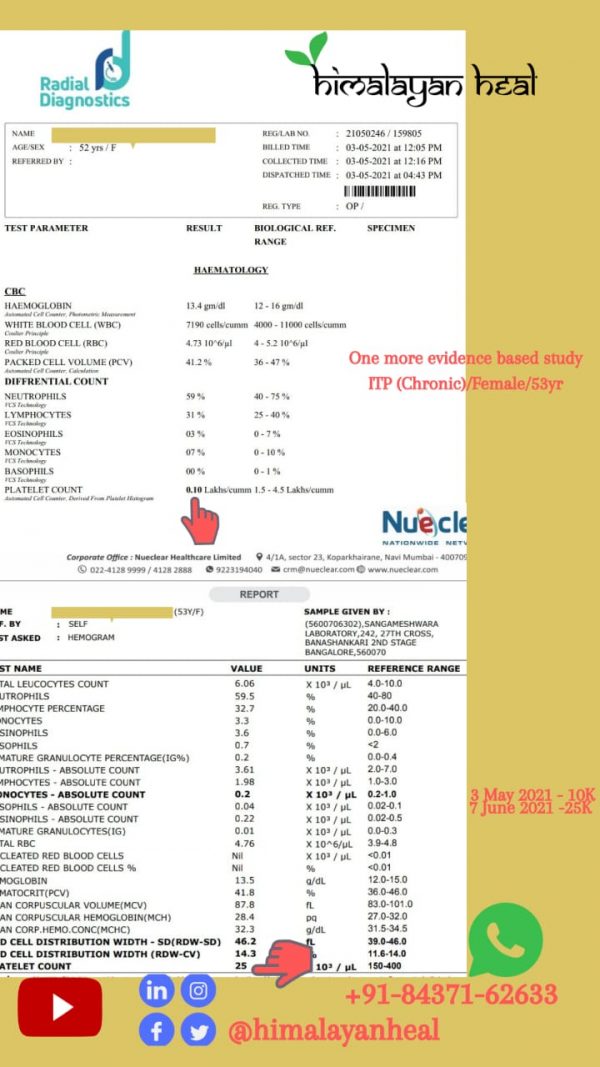



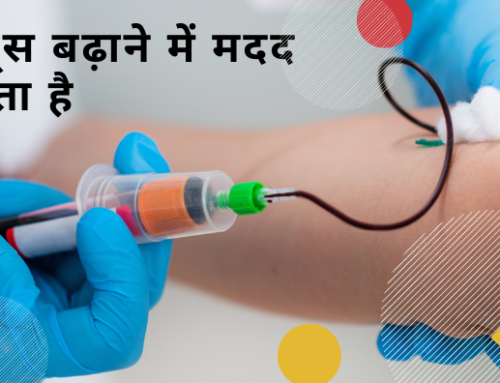


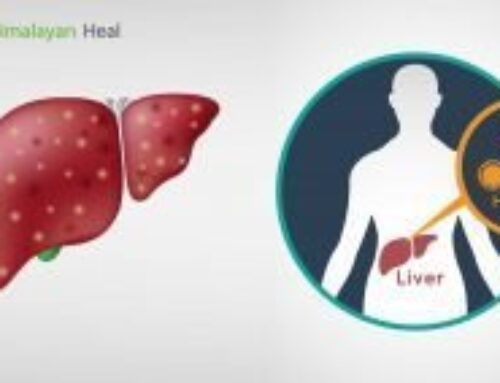
Sir good evening I live in ghaziabad
That’s my wife is 32 yrs so my wife Platelets are < 20.000 2 years back and till date
No improve platelets
Please tell me now …what are do
Till date platelets are 19000
Dear Sir,
Kindly share your reports on our what’s app no +91-84371-62633 or mail us on [email protected] or [email protected]
Even you can read patient case studies on our website.
I have low platelets count for the last 20 years. My count remains below 10,000. I have tried many ayurvedic or herbal treatment like wheatgrass juice, papaya leaf juice, giloy ghanvati, ama powder etc for years but without any benefit.
Dear Sir,
Kindly share your reports on our what’s app no +91-84371-62633 or mail us on [email protected] or [email protected]
Even you can read patient case studies on our website.
Hello Dr.
My son is suffering from ITP (chronic) prob1em from last 4 month his age is 14th year. On diwali his platelet count 7000 and he was given ivig injection. He recoverd for a while but time to time he platelet kept rising and dropping. He is presently being prednisolone 20mg(tappered from 60mg) and revolade 50mg. There was improvement for a short duration but his platelets are falling again. Kindly suggest appropriate treatment and how can we get in touch with you.
Dear Mam,
Kindly share your reports on our what’s app no +91-84371-62633 or mail us on [email protected] or [email protected]
Even you can read patient case studies on our website.